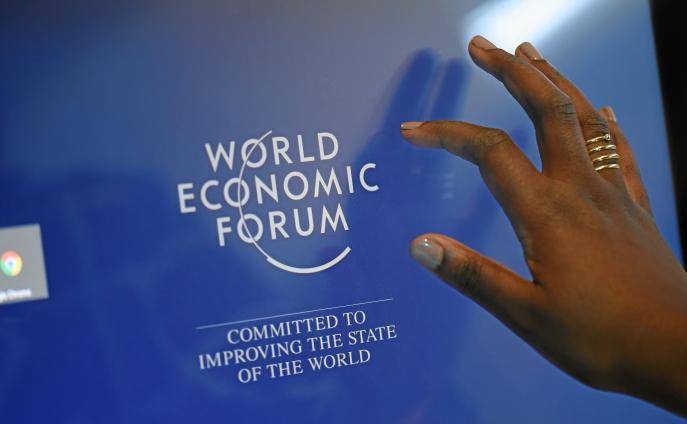Industry estimates show that non-OECD (The Organization for Economic Cooperation and Development) countries will have to double their investments in electricity by 2040 to keep pace with demand. A new report from the World Economic Forum, released today, offers solutions to improve investment attractiveness of the power sector that would help to bridge this critical investment gap, as the countries face increased competition for capital necessary to invest in power infrastructure.

Over 2,500 leaders from business, government, international organizations, civil society, academia, media and the arts participated in the 46th World Economic Forum Annual Meeting in Davos-Klosters, Switzerland, in January.
“Within the next 25 years, we expect the world’s emerging markets to deploy more renewable generating capacity than their developed counterparts”
According to International Energy Agency, meeting the electricity demands of consumers and businesses in non-OECD countries will require $13 trillion investments by 2040 – outspending OECD markets by a factor of 2 to 1. The report outlines recommendations for fast-growing economies to attract more private investments to the power sector in order to achieve their social and economic objectives, including universal access to reliable, affordable power and environment sustainability.
“From 2000-2014, non-OECD countries invested on par with OECD countries – about $240 billion annually. But given the amount of electricity infrastructure that needs to be built in fast-growing countries to serve growing demand, fast-growing countries will not only have to double their investments, but also ensure that these funds are used to develop all parts of the value chain so that none are left stranded or underdeveloped,” said Roberto Bocca, Head of the Energy Industries of the World Economic Forum.
The report analyses best practices in improving investment attractiveness of the power sector and outlines eight recommendations for fast-growing countries:
Policymakers
- Pursue the most efficient pathways to policy objectives. Develop long-term roadmaps to ensure the right balance between renewable and conventional, centralized and distributed power generation, while remaining as technology neutral as possible.
- Develop integrated policies that ensure balanced development of the power value chain. Policies need to be integrated across the power value chain to ensure that the upstream fuel supply, generation assets, and transmission and distribution (T&D) develop in parallel.
- Ride the declining technology-cost curve. Capitalize on the declining technology cost curve, and avoid the urge to promote unique technologies that will likely remain at high cost due to a lack of scale.
Regulators
- Provide a level playing field for technologies, reflecting carbon abatement and security of supply appropriately. Structure power markets in ways that recognize the full value and costs of technologies, including carbon pricing.
- Ensure technically and financially viable operations across the value chainby keeping it clear of financial obstacles. Regulators need to work with suppliers to reduce losses from non-metered supply and ensure that tariff subsidies are fully funded.
Business & Investors
- Create effective public-private partnerships to attract private sector capital. Regulations around public-private partners should be transparent and independent to ease investors’ concerns about committing long-term capital.
- Nurture favorable investment environment. Put measures in place to reduce risk and decrease the cost of capital, allocating residual risks to the most appropriate market participants.
- Actively invest in education and R&D to close knowledge and human capital gaps. Foster the development of universities and research institutes that produce the talent that will innovate, develop and manage the power sector in the decades ahead.
“There is a massive need for power in the developing markets, and over one billion people still lack access to electricity,” said Steve Bolze, President and CEO of GE Power and current chairman of the WEF Energy Technology community. “This need will require a portfolio of power generation and digital solutions that will enable affordable, reliable and sustainable electricity.”
“Fast-growing economies have a great opportunity to define the sustainable energy mix and power market structure they need,” said Ignacio S. Galán, Chairman and CEO of Iberdrola and current chairman of the Forum’s Energy Utilities community. “This will play an essential part in driving the required scale of investment to clean generation, especially renewable, as well as efficient storage and networks, which is essential in the global energy sector.”
“Within the next 25 years, we expect the world’s emerging markets to deploy more renewable generating capacity than their developed counterparts,” said Julian Critchlow, who leads the Utilities and Alternative Energy Sector at Bain & Company, which collaborated with the Forum on the report. “Historically, the public sector has supplied about 70 percent of electricity investment in non-OECD countries, but the game has changed. These governments could fall well short of supplying the necessary funds to meet growing energy demands.”
The Future of Electricity Report is a continuation of the World Economic Forum’s Future of Electricity initiative, which launched at the 2014 Annual Meeting with the aim of providing governments, companies and communities with a platform for dialogue and learning amid the transition to a lower-carbon economy.
Over 2,500 leaders from business, government, international organizations, civil society, academia, media and the arts will participate in the 46th World Economic Forum Annual Meeting in Davos-Klosters, Switzerland, on 20-23 January. Under the theme, Mastering the Fourth Industrial Revolution, the programme comprises over 250 sessions, of which over 100 sessions will be webcast live.
Taking a formative role in shaping the discussion at the Annual Meeting 2016 as the Co-Chairs are: Mary Barra, Chairman and Chief Executive Officer, General Motors, USA; Sharan Burrow, General Secretary, International Trade Union Confederation (ITUC), Brussels; Satya Nadella, Chief Executive Officer, Microsoft Corporation, USA; Hiroaki Nakanishi, Chairman and Chief Executive Officer, Hitachi, Japan; Tidjane Thiam, Chief Executive Officer, Credit Suisse, Switzerland; and Amira Yahyaoui, Founder and Chair, Al Bawsala, Tunisia.
Filed Under: News, Policy




